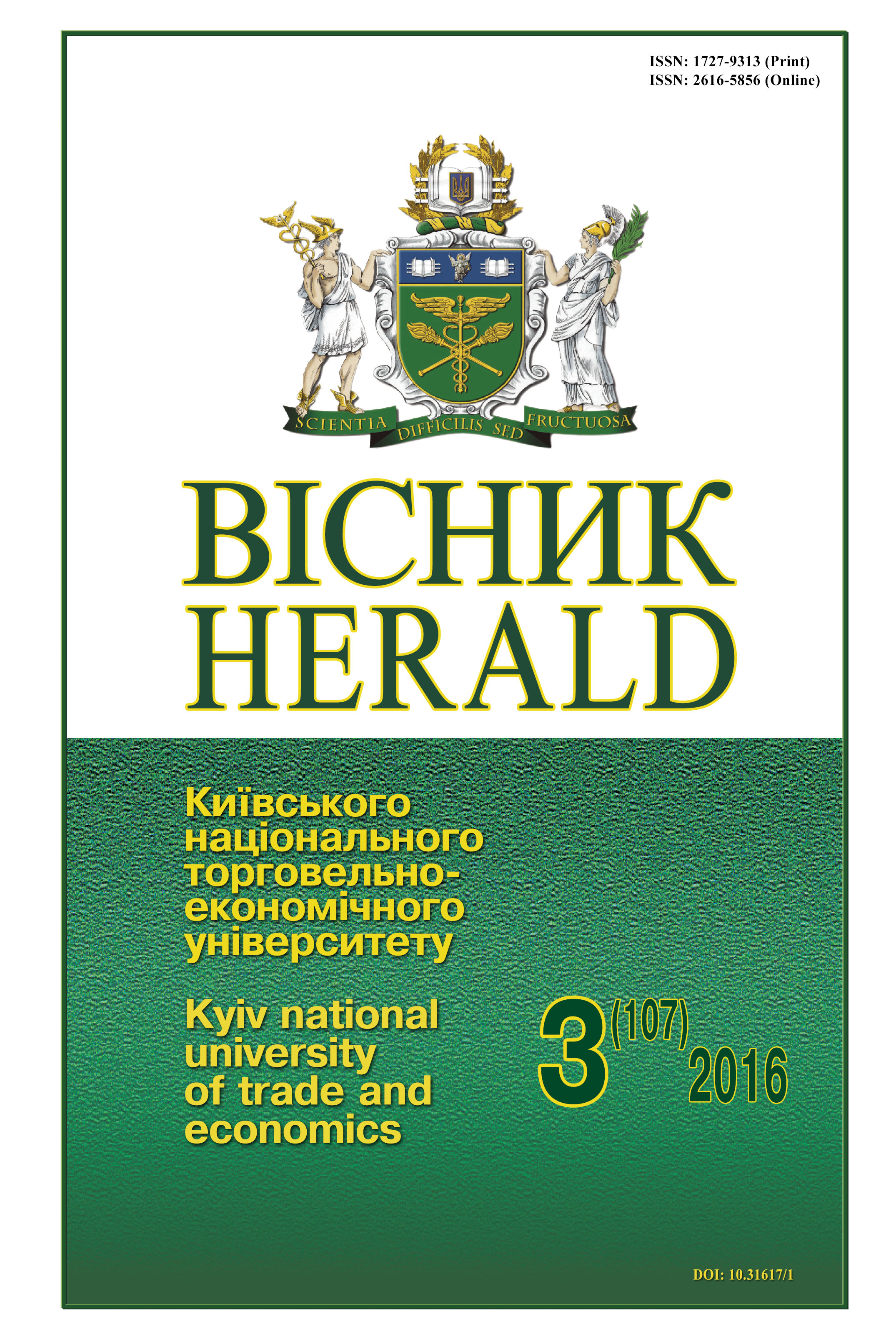Штучні нейронні мережі у прогнозуванні валютного ринку
Ключові слова:
стратегічне планування, прогнозування валютних курсів, засоби штучного інтелекту, нейронні мережіАнотація
Проаналізовано переваги застосування обчислювальних методів, зокрема штучних нейронних мереж для побудови моделей прогнозування валютних курсів. Наведено результати експериментів з прогнозування обмінних курсів резервних валют та української гривні.
Посилання
Lam M. Neural network techniques for financial performance prediction: integrating fundamental and technical analysis // Decision Support Systems. —
— 37(4). — P. 567–581.
Önder E., Fɪrat B. Hepsen A. Forecasting Macroeconomic Variables using Artificial Neural Network and Traditional Smoothing Techniques // Journal of
Applied Finance & Banking. — 2013. — Vol. 3, no. 4. — P. 73–104.
Kuan C. & White H. Artificial neural networks: an econometric perspective // Econometric Reviews. — 1994. — 13 (1). — P. 1–91.
Swanson N. & White H. A model-selection approach to assessing the information in the term structure using linear models and artificial neural networks //
Journal of Business & Economic Statistics. — 1995. — 13 (3). — P. 265–275.
Garcia R. & Gençay R. Pricing and hedging derivative securities with neural networks and a homogeneity hint // Journal of Econometrics. — 2000. —
(1). — P. 93–115.
Qi M. & Madala G. Economic factors and the stock market: a new perspective // Journal of Forecasting. — 1999. — 18. — P. 151–166.
Jorion P. Predicting volatility in the foreign exchange market // The Journal of Finance. — 1995. — 50 (2). — P. 507–528.
Fletcher D. & Goss E. Forecasting with neural networks: an application using bankruptcy data // Information & Management. — 1993. — 24 (3). — P. 159–167.
Salchenberger L., Cinar E. & Lash N. Neural networks: a new tool for predicting thrift failures / L. Salchenberger, E. Cinar & N. Lash // Decision
Sciences. — 1992. — 23. — P. 899–916.
Lisi F. & Schiavo R. A comparison between neural networks and chaotic models for exchange rate prediction // Computational Statistics & Data
Analysis. — 1999. — 30 (1). — P. 87–102.
Firmino P., de Mattos Neto P. & Ferreira T. Correcting and combining time series forecasters // Neural Networks. — 2014. — 50. — P. 1–11.
White H. A Reality Check for Data Snooping / H. White // Econometrica. — 2000. — 68. — Р. 1097–1126.
Kiani K. Detecting business cycle asymmetries using artificial neural networks and time series models // Computational Economics. — 2005. — 26 (1). —
P. 65–89.
Jones S. & Netter J. (2008). Efficient Capital Markets. In David R. Henderson (ed.). Concise Encyclopedia of Economics (2nd ed.).
Hsieh D. Testing for nonlinear dependence in daily foreign exchange rates / D. Hsieh // Journal of Business & Economic Statistics. — 1989. — 7 (3). —
Р. 307–317.
De Grauwe P., Dewachter H. & Embrechts M. Exchange Rate Theory: Chaotic forecasting and decision making // International Journal of Forecasting. —
— № 10. — Р. 177–191.
Brooks C. Testing for non-linearity in daily sterling exchange rates / C. Brooks // Applied Financial Economics. — 1996. — 6. — Р. 307–317.
Setiono N. & Liu R. Improving backpropagation learning with feature selection. Applied Intelligence / N. Setiono & R. Liu // The International
Journal of Artificial Intelligence, Neural Networks, and Complex ProblemSolving Technologies. — 1996. — № 62. — P. 129–139.
Belue B. & Baver H. Determining input features for multilayer perceptrons. Neurocomputing. — 1995. — V. 7, 2. — P. 111–121.
Haykin S. Neural Networks and Learning Machines / S. Haykin // New Jersey : Prentice Hall, 2008. — 936 p.
Cuaresma J.-C. Beating the Random Walk in Central and Eastern Europe / J.-C. Cuaresma & J. Hlouskova // Journal of Forecasting. — 2005. — 24. —
P. 189–201.
Meese R. & Rogoff K. The out-of-sample failure of empirical exchange rate models: sampling error or misspecification? Exchange Rates and International
Macroeconomics, 1983. — T. 4 (1). — P. 67–112.
Galeshchuk S. Neural-Based Method of Measuring Exchange-Rate Impact on International Companies’ Revenue // Distributed Computing and Artificial
Intelligence, 11th International Conference. Springer International Publishing. — 2014. — P. 529–536.



